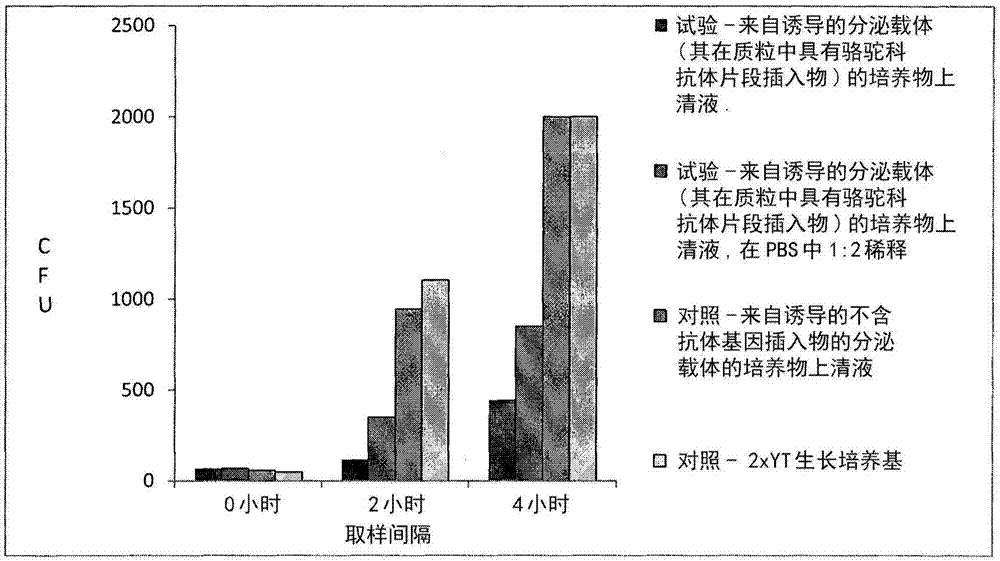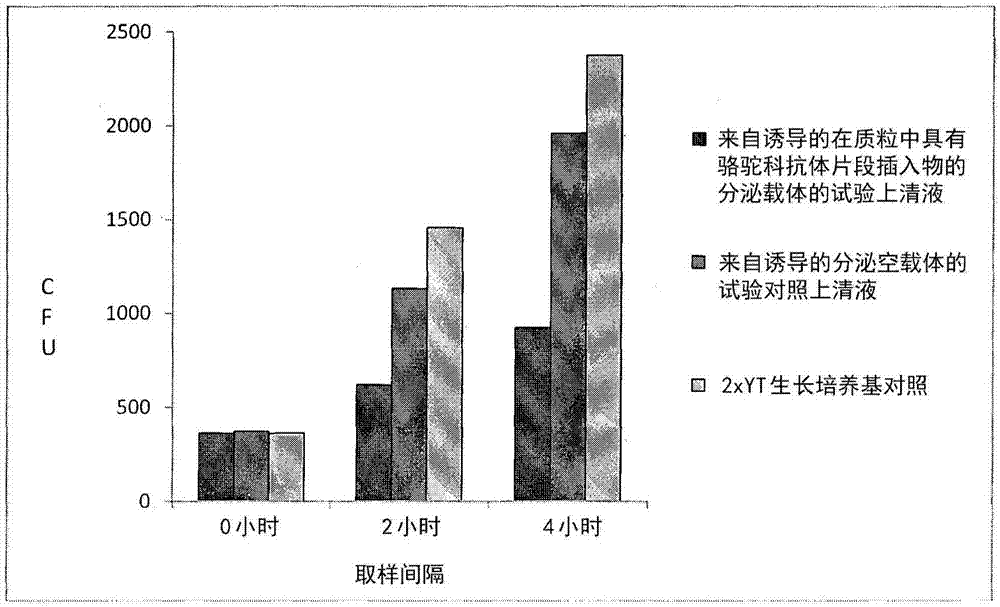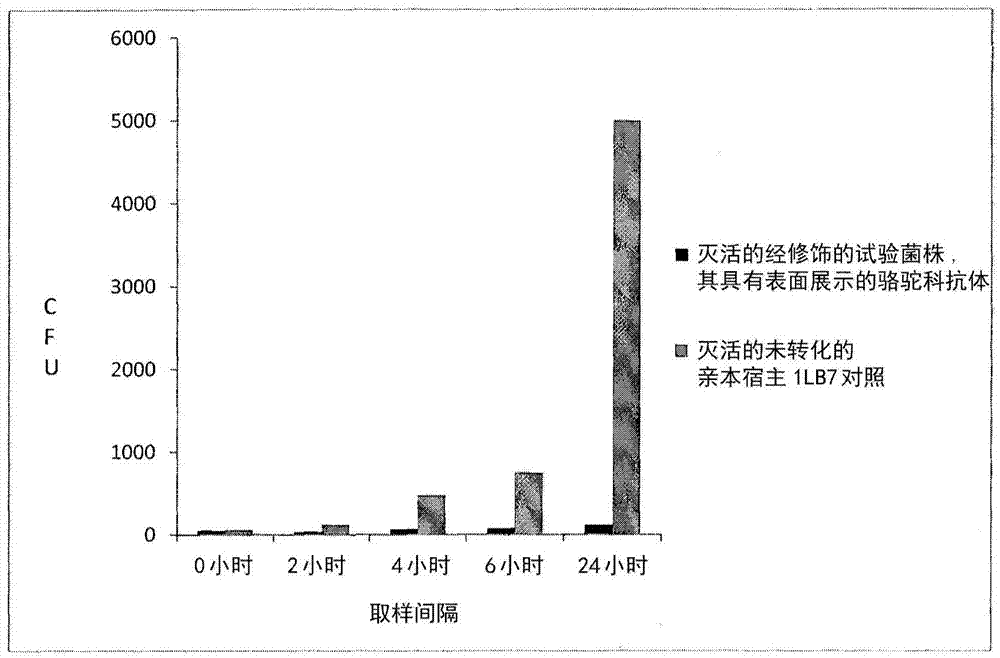Expression of a single chain antibody against salmonella in lactobacillus
一种单链抗体、沙门氏菌的技术,应用在微生物学和基因工程领域,能够解决血清变型等问题
- Summary
- Abstract
- Description
- Claims
- Application Information
AI Technical Summary
Problems solved by technology
Method used
Image
Examples
Embodiment 1
[0411] Isolation and Characterization of Lactobacilli
[0412] Various organs (trachea, crop, gizzard, small intestine, large intestine and ceacum) were collected from backyard poultry birds. Lactobacilli were isolated by inoculating field samples in Lactobacillus selective liquid medium (LSB) (HiMedia / M1166-500G) and incubating at 37°C under anaerobic conditions. Selected colonies were enriched on MRS liquid medium (HiMedia / M369-500G). The purity of the selected colonies was checked by Gram stain (Gram positive short rods). The genetic identity of Lactobacillus was confirmed by performing a sequencing reaction of 900 bp amplicons as shown in SEQ ID NO: 245 (forward primer) and SEQ ID NO: 246 (reverse primer) The primers amplify the 16S RNA gene. The genetic identity of L. reuteri was confirmed by performing a sequencing reaction of the 303bp amplicon represented by SEQ ID NO: 247 (forward primer) and SEQ ID NO: 248 (reverse primer). The indicated species-specific primers ...
Embodiment 2
[0414] Isolation of Lactobacillus reuteri MuB and CnBP
[0415] Genomic DNA was isolated from the 1LB7 strain by resuspending the bacterial pellet in 5 ml of TNE buffer containing lysozyme (10 mg / ml concentration). 500 μl of 10% SDS and 250 μl of proteinase K (concentration of 10 mg / ml) were added and incubated at 55° C. for 2 hours with intermittent shaking. Genomic DNA was isolated using the phenol chloroform extraction method (Raya et al., Food Microbiology Protocols, 2001, 14, 135-139).
[0416] A partial 1.7 kb region of the MuB gene was PCR amplified using primers as shown in SEQ ID NO: 249 (forward primer) and SEQ ID NO: 250 (reverse primer). This 1.7 kb region contains the LPTQG motif. Amplicons were then cloned into pJet vectors and sequenced according to the manufacturer's instructions (Catalogue #: K1231, Thermo Scientific).
[0417] The entire CnBP gene (1.08 kb) was PCR amplified using primers as shown in SEQ ID NO: 251 (forward primer) and SEQ ID NO: 252 (reve...
Embodiment 3
[0419] Generation of camelid antibodies against whole-cell Salmonella
[0420] Immunization of camels with whole-cell killed Salmonella enterica: Briefly, actively growing Salmonella enterica cultures (log phase) were inactivated at 37°C for 24 hours by the addition of 0.5% formalin. The culture was maintained under constant shaking at 20 rpm. Cultures were then stored at 4°C and representative samples were tested for innocuity in enriched growth medium. After confirmation of inactivation, the bacterial culture was washed 3 times in 1X PBS buffer and resuspended at a concentration of 200 μg / ml. 5 ml of the suspension were mixed with an adjuvant (Montanide ISA 206V) to form an emulsion.
[0421] A final bleed of the immunized camels was performed 60 days after immunization. Total RNA was isolated from isolated peripheral blood lymphocytes. Use the primers shown in SEQ ID NO:253 (forward primer) and SEQ ID NO:254 (reverse primer) to carry out the PCR reaction that is used ...
PUM
 Login to View More
Login to View More Abstract
Description
Claims
Application Information
 Login to View More
Login to View More - R&D
- Intellectual Property
- Life Sciences
- Materials
- Tech Scout
- Unparalleled Data Quality
- Higher Quality Content
- 60% Fewer Hallucinations
Browse by: Latest US Patents, China's latest patents, Technical Efficacy Thesaurus, Application Domain, Technology Topic, Popular Technical Reports.
© 2025 PatSnap. All rights reserved.Legal|Privacy policy|Modern Slavery Act Transparency Statement|Sitemap|About US| Contact US: help@patsnap.com



